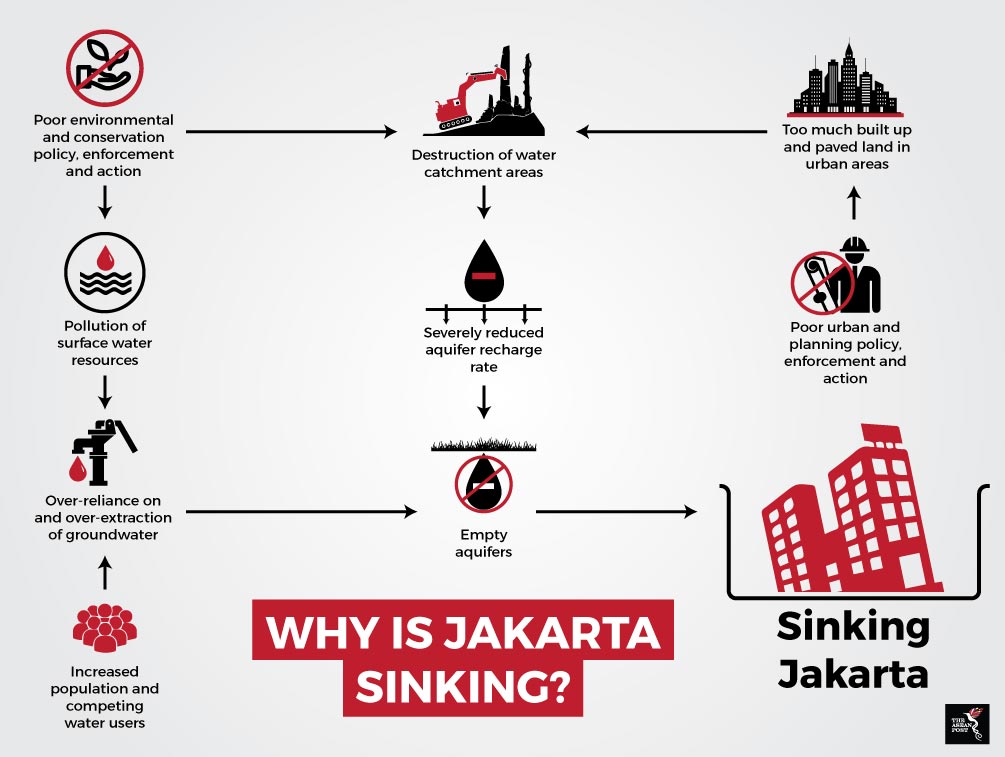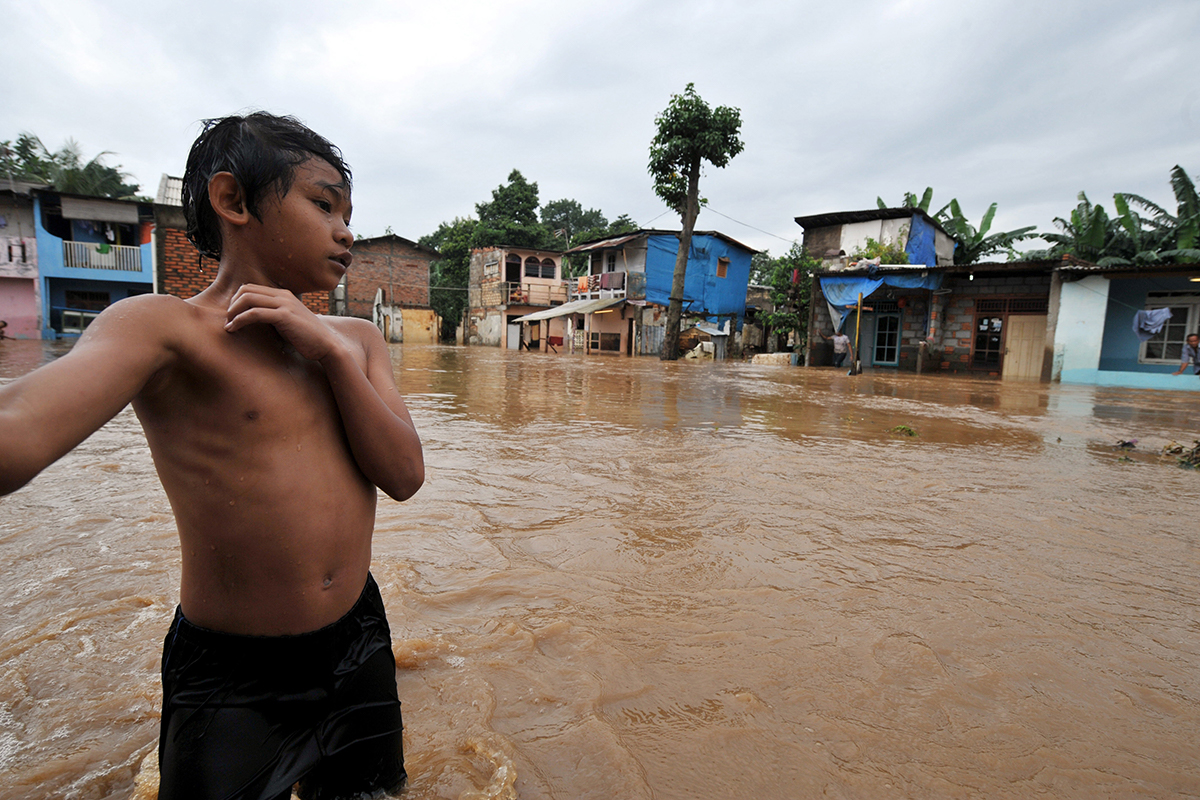Jakarta is one of the most populous urban agglomerations on earth. Its population has grown immensely in the last century. The megacity was once home to just 115,000 people in the 1900s when it was a Dutch colony, which then grew to 1.43 million in the 1950s at the time of Indonesia’s independence. In the 2000s, its population was 8.39 million after the collapse of the New Order and in 2017 this figure has grown to almost 13.5 million.
For those living and working in North, West and East Jakarta, as well as in some parts of Central and South Jakarta, the earth under their feet is literally sinking. In North Jakarta, home to four million people and location of much of Indonesia’s economic activity, the land subsidence has passed 2.5 metres in 10 years. Some areas have sunk as much as four metres. Other parts are dipping at a rate of 25 centimetres a year, which is double the global average for coastal megacities.
While coastal and delta cities are vulnerable to land subsidence by natural causes, the main culprit for the sinking of Jakarta is man-made. Decades of living dangerously in terms of water resource management, urban planning, waste and wastewater management, is taking its toll on the megacity. This is made possible by poor city planning, environmental and conservation policies, enforcement and practices.
No clean water
In severe cases of sinking land, the main cause is over-extraction of groundwater resources for everyday use. In the case of Jakarta, its surface water resources can’t be treated for consumption as it is too contaminated. Lack of proper and sufficient wastewater treatment, as well as waste management meant that much of the megacity’s liquid and solid wastes are dumped into the 13 rivers running through it. Jakarta’s sole wastewater treatment plant, located in the Setiabudi Reservoir in Central Jakarta, can only treat about two percent of its wastewater. Jakarta’s Citarum river is considered one of the dirtiest in the world.
According to the Jakarta Water Resources Council, the rivers in Jakarta supply only 2.2 percent of the megacity’s total clean water demand. The rest is piped in from outside Jakarta, namely from Cisadane river in Tangerang and the Jatiluhur Reservoir. However, only 35 percent of Jakarta’s annual water needs of up to 1.27 billion litres is served by the water utility company. The rest is mostly served by privately drilled wells to tap the aquifer. In 2016, there were as many as 4,720 wells in Jakarta, up 5.5 percent from the previous year.
Under normal conditions, the aquifer will be naturally recharged. However, the rate of groundwater recharge in Jakarta is too slow when compared to the rate of groundwater extraction. This is most probably due to the paving, development of built up areas, as well as deforestation. According to Australian research institute, Future Directions International (FDI), data from 2016 shows that in the past few decades, urban development around Jakarta has reduced green areas from 35 percent to just 9.3 percent. This includes the conversion of green lungs, water catchment areas and wetlands in the city’s periphery into industrial estates and urban development.

Source: Various sources
Under the weight of the ever-sprawling, ever-expanding urbanisation of Jakarta, the ground underneath is continuously compacting and sinking into the shallow aquifer. Without urgent remedial action, the sinking areas are exposed to increased flood risk, as well as damage to buildings and infrastructure. Already there are areas of descending ground, permanent wet soil and cracking buildings in North Jakarta. Research by the Faculty of Earth Sciences and Technology at the Bandung Institute of Technology shows estimates that by 2050, around 95 percent of North Jakarta will be below sea level.
The issue of sinking coastal megacities in Southeast Asia is not the domain of Jakarta alone. Ho Chi Minh City and Bangkok are also facing a similar situation, albeit at a slower rate. Before lives are lost, and before climate change impacts amplify the situation, the trifactor of water resource management, wastewater treatment and urban planning has to be addressed, not only through policy, but also enforcement, practice and education. For Jakartans though, the situation looks bleak as their city continues to sink.
